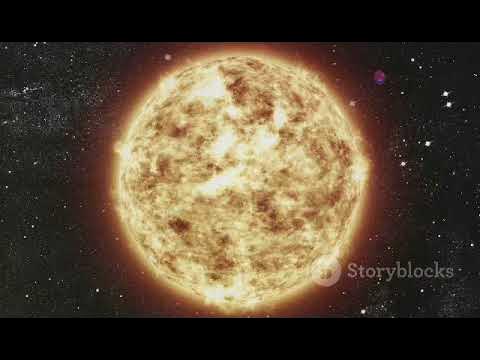SPACE LAB: Where Did All the Gold in the Universe Come From?
Summary
TLDRThe script reveals the cosmic origins of heavy elements like gold and platinum, long a mystery to scientists. It explains that while lighter elements form in stars, heavier ones require extreme events like neutron star collisions. The detection of gravitational waves and light from such an event provided the first evidence of these elements' creation. Neutron stars, the universe's densest objects, are born from collapsing heavy stars. When they collide, they generate temperatures and pressures that initiate the rapid neutron capture process, forging new, heavy elements. This discovery links precious metals on Earth to the most violent cosmic forces.
Takeaways
- 💍 The ring on your finger, whether made of platinum or gold, holds a secret related to a cosmic mystery.
- 🌌 Scientists have long wondered where heavy elements like gold and platinum originate in the universe.
- 🔬 Lighter elements up to iron, with 26 protons, are understood to form inside stars, but heavier elements are more mysterious.
- 🌟 Gold, with 79 protons, cannot be produced in normal stellar processes, nor can elements like platinum and rare earth elements.
- 💥 The leading theory for decades was that these heavy elements are formed during collisions between neutron stars.
- 🌊 This theory gained evidence when gravitational waves from a neutron star collision were detected, along with light carrying chemical signatures of heavy elements.
- ⚛️ Neutron stars are incredibly dense objects, formed when massive stars collapse, consisting almost entirely of neutrons.
- 🌠 When two neutron stars collide, extreme conditions allow for the creation of heavy elements through a process known as the rapid neutron capture process (r-process).
- 🔗 The r-process begins with a seed nucleus, like iron, and quickly captures many neutrons, leading to unstable nuclei that eventually form new elements.
- 💡 The gold or platinum in your jewelry likely originated from such a violent cosmic event, showing a piece of the universe is literally in your hand.
Q & A
What is the secret contained in the ring made of platinum or gold mentioned in the script?
-The secret is that these heavy elements, like gold and platinum, originate from extremely violent cosmic events, specifically the collision of two neutron stars.
Why are lighter elements better understood in terms of their formation?
-Lighter elements, ranging from helium to iron, are mostly formed inside stars and their formation processes are well-documented, unlike heavier elements like gold and platinum.
What is the leading theory for the origin of heavy elements such as gold and platinum?
-The leading theory is that heavy elements originate from the collision of two neutron stars, an event that produces the necessary conditions for their formation.
How did scientists confirm the theory of heavy element formation from neutron star collisions?
-Scientists detected gravitational waves and light from a neutron star collision, which contained the chemical signatures of heavy elements, providing the first evidence supporting the theory.
What are neutron stars and how are they formed?
-Neutron stars are the remnants of heavy stars that have undergone a supernova explosion, resulting in their cores collapsing and forming incredibly dense objects composed almost entirely of neutrons.
What happens when two neutron stars collide?
-During a collision, the explosion creates extreme temperatures and pressures, releases a large number of free neutrons, and initiates the rapid neutron capture process, or r-process.
What is the r-process and how is it related to the formation of heavy elements?
-The r-process is a rapid neutron capture process that occurs in the aftermath of a neutron star collision, where a seed nucleus like iron quickly captures many neutrons, leading to the formation of heavy elements.
Why is the r-process considered rapid?
-The r-process is considered rapid because it involves the capture of many neutrons by a nucleus within a matter of milliseconds, resulting in the creation of new, heavy elements.
How does the decay of neutrons into protons contribute to the formation of heavy elements?
-The decay of neutrons into protons within the unstable nucleus formed during the r-process helps stabilize the nucleus and contributes to the formation of heavy elements with higher atomic numbers.
What does the discovery of the origin of heavy elements imply about the materials we use on Earth?
-The discovery implies that materials like gold and platinum, found on Earth, are the result of cosmic events and represent a direct link between Earth and the most violent forces in the universe.
How does the script describe the significance of a piece of gold on one's finger?
-The script describes a piece of gold as not just a precious metal but as a symbol of a cosmic cataclysm, representing a piece of the universe's most powerful forces.
Outlines

此内容仅限付费用户访问。 请升级后访问。
立即升级Mindmap

此内容仅限付费用户访问。 请升级后访问。
立即升级Keywords

此内容仅限付费用户访问。 请升级后访问。
立即升级Highlights

此内容仅限付费用户访问。 请升级后访问。
立即升级Transcripts

此内容仅限付费用户访问。 请升级后访问。
立即升级5.0 / 5 (0 votes)






